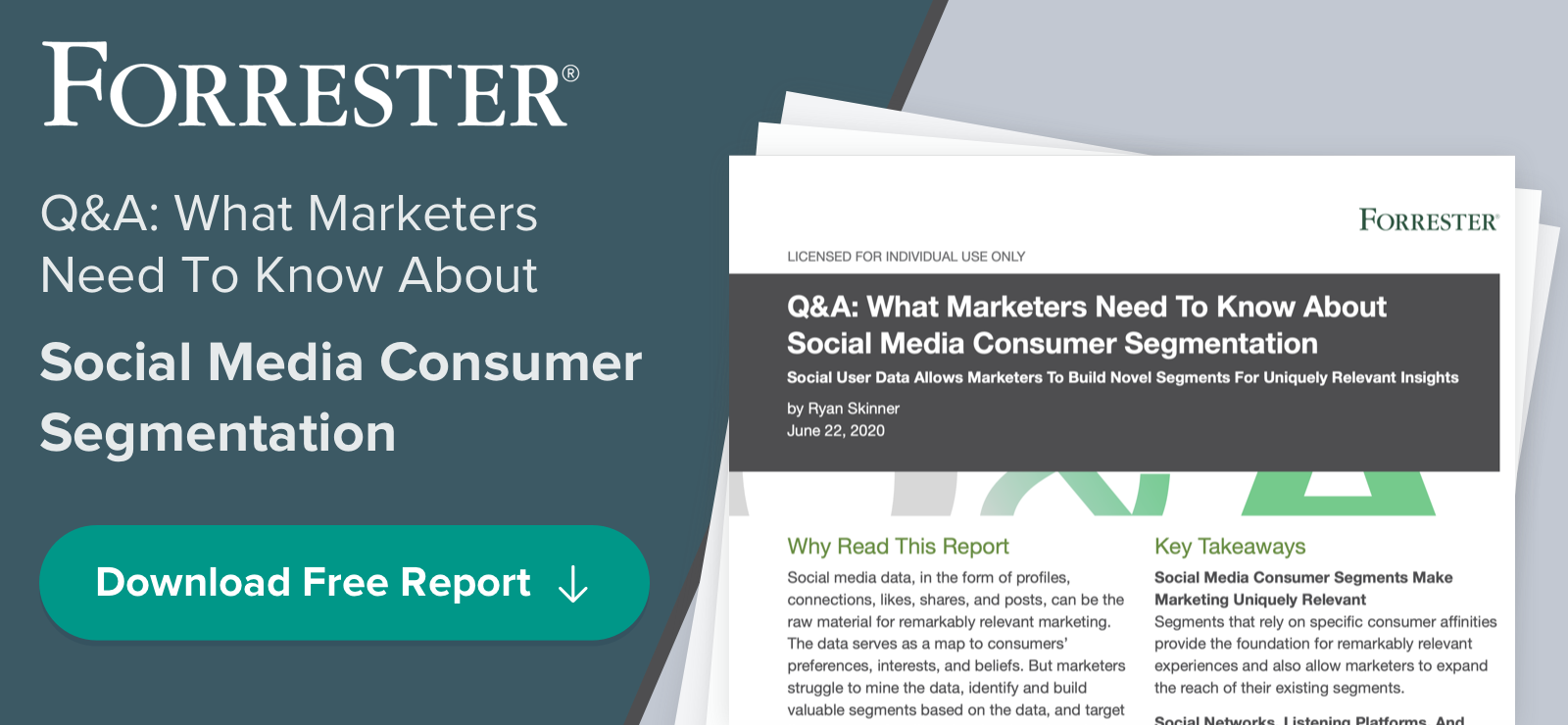The evolution of social data & audience intelligence
The more you know about your customers, the better you can reach them with relevant messaging in their preferred digital channels. In the “olden days”, marketers had to rely solely on primary research and social listening tools like Radian6 and Collective Intellect.
Social listening is the use of technology to monitor the social web for key phrases, topics, brand and competitor mentions. It gives marketers insights into segmented conversations in the news media, blogs, forums and social media.
Social listening platforms like Pulsar, Brandwatch, Synthesio, Talkwalker and Netbase are innovating to keep with the demand for better technology by integrating audience analytics, natural language processing (NLP), AI, machine learning and linguistic analysis to decode social media conversations from various sources.
The emergence of audience intelligence platforms is disrupting the industry by taking a different approach at analyzing social media conversations and behavior. Platforms like Audiense, Brandwatch Audiences, People Pattern, Affinio and others dissect audience conversations, affinities, unique characteristics and media consumption to give a more in-depth and accurate view of the data.
The analyst industry is also taking notice. G2 recently added audience intelligence as a category recognizing it as viable technology in the larger social intelligence tech stack. Forrester also released a report, “What Marketers Need To Know About Social Media Consumer Segmentation” which introduces the topic, although they refer to the method as customer segmentation not audience intelligence.
Understanding the difference between social listening and audience intelligence is critical. Social listening looks at keywords from specific online content sources. Audience intelligence starts with the audience and then analyzes their conversations and behaviors.
The reason why audience data is so powerful is that you can uncover “insights from people” versus “insights from content sources”. These are qualified audiences that will give you the ability to:
- Understand the perceptions and attitudes that each sub-audience has about your brand, product or technology.
- Alter your narratives to better align with what specific audiences care about.
- Discover new phrases and language and then use that to build your keyword list for paid search and SEO initiatives.
- Use audience data to inform ad copy, post copy, blog titles, eBooks and even to build media plan for paid social.
Audience intelligence is art + science, but mostly science
Audience intelligence is the process of architecting audiences, dissecting them into smaller clusters, and then analyzing patterns, habits and behavior. The result is actionable and defendable insights that you can use to make data-informed decisions.
Human analysis and AI-driven insights can discover new and unique audiences, where to find them online, and how best to engage with them in the channels where they spend their time. There are three distinct ways to build audiences:
Specialized Audiences: This type of audience analysis begins with a bio search and works for business and tech audiences like CEOs/CIOs, data engineers, software developers, and IT professionals mainly because they aren’t shy about telling others what they do in their bios. To find more niche audiences like developers that are talking about #SecOps, #DevSecOps or Robotics Process Automation (RPA) would require a combination of bio search and social media conversations. Other specialized audiences like journalists, investors, commercial real-estate agents and healthcare professionals can be built effectively using this methodology.
Affinity-based Audiences: This approach is works for finding like-minded individuals that have similar interests, affinities and characteristics. It uses a combination of bio search, follower relationships and social media conversations. This method can uncover niche audiences like millennials who live in Austin, enjoy travelling, and drink red wine, as an example.
Micro-Audiences: These are smaller audiences (<500) and consist of more influential individuals but are built for the purpose of real-time content and organic influencer marketing. The audience sample size is large enough to yield directional insights that can inform content and highly targeted creative assets, yet manageable for high-touch influencer engagement.
Why an audience-first content strategy works better than the rest
Marketers must ensure that their supply of content meets the demand of audience attention by providing relevant stories. The only way to surface that demand is through audience data.
Audience data is a blueprint. Just like an architect who designs a house using 3D software, marketers can use data to build data-informed campaigns. The result: creative storytelling and advertising that can break through clutter and reach audiences with memorable, impactful and game-changing programs.
All data is important–social listening, competitive analysis, web analytics, search and display performance data and primary research all can provide marketers with actionable insights that will move the needle on any program or campaign.
Audience intelligence is probably the most important data you can use to break through the noise and really make an impact. It puts you in the same environment, the same mindset, and the same playing field as your customers. It takes you from the zoo, straight to the jungle.
Photo by Michael Dziedzic on Unsplash







